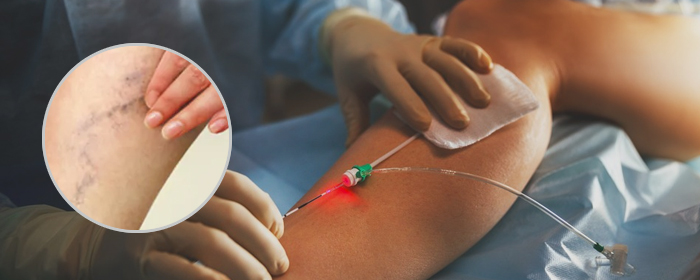Services
Varicose Vein Surgery

Varicose (VAR-i-kos) veins are swollen, twisted veins that you can see just under the surface of the skin. These veins usually occur in the legs; however, they can also form in other parts of your body. Varicose veins are a common condition, and usually cause few signs or symptoms. In some cases, varicose veins may cause complications, such as mild to moderate pain, blood clots, or skin ulcers.
Veins are blood vessels that carry blood from your body's tissues to your heart. The heart pumps the blood to your lungs to pick up oxygen. The oxygen-rich blood is then pumped out to your body through your arteries. From your arteries, the blood flows through tiny blood vessels called capillaries, where it gives up its oxygen to the body's tissues. Your blood then returns to your heart through your veins to pick up more oxygen. Veins have one-way valves that help keep blood flowing toward your heart. If your valves are weak or damaged, blood can back up and pool in your veins. This causes the veins to swell, which can lead to varicose veins. A number of factors may increase your risk for varicose veins, including family history, age, gender, pregnancy, overweight or obesity, and lack of movement.
Causes
Weak or damaged valves in the veins can cause varicose veins. After your arteries deliver oxygen-rich blood to your body, your veins return the blood to your heart. The veins in your legs must work against gravity to do this. One-way valves inside the veins open to let blood flow through and then shut to keep blood from flowing backward. If the valves are weak or damaged, blood can back up and pool in your veins. This causes the veins to swell.
Weak valves may be due to weak vein walls. When the walls of the veins are weak, they lose their normal elasticity and become like an overstretched rubber band. This makes the walls of the veins longer and wider, and causes the flaps of the valves to separate.
When the valve flaps separate, blood can flow backward through the valves. The backflow of blood fills the veins and stretches the walls even more. As a result, the veins get bigger, swell, and often get twisted as they try to squeeze into their normal space. These are varicose veins.
Signs and Symptoms
The signs and symptoms of varicose veins include:
Large veins that you can see on your skin.
Mild swelling of your ankles and feet.
Painful, achy, or "heavy" legs.
Throbbing or cramping in your legs.
Itchy legs, especially on the lower leg and ankle. This is sometimes incorrectly diagnosed as dry skin.
Discolored skin in the area around the varicose vein.
Signs of telangiectasias are red clusters of veins that you can see on your skin. They're usually found on the upper body, including the face. Signs of spider veins are red or blue veins in a web pattern that often show up on the legs and face.
Complications
Sometimes varicose veins can lead to dermatitis, an itchy rash. If you have varicose veins in your legs, dermatitis may affect your lower leg or ankle. Dermatitis can cause bleeding or skin ulcers if the skin is scratched or irritated.
Varicose veins may also lead to a condition called superficial thrombophlebitis . Thrombophlebitis is a blood clot in a vein. Superficial thrombophlebitis means that the blood clot occurs in a vein close to the surface of the skin. This type of blood clot may cause pain and other problems in the affected area.
Surgical Procedure
you'll usually be offered a surgical procedure called ligation and stripping to remove the affected veins. Varicose vein surgery is usually carried out under general anaesthetic, which means you will be asleep during the procedure.
You can usually go home the same day, but an overnight stay in hospital is sometimes necessary, particularly if you're having surgery on both legs.
Ligation and stripping
A technique called ligation and stripping involves tying off the vein in the affected leg and then removing it. 2 small incisions are made. The first is made near your groin at the top of the varicose vein and is approximately 5cm in diameter.
The second, smaller cut is made further down your leg, usually around your knee. The top of the vein (near your groin) is tied up and sealed. A thin, flexible wire is passed through the bottom of the vein and then carefully pulled out and removed through the lower cut in your leg.
The blood flow in your legs will not be affected by the surgery. This is because the veins deep within your legs will take over the role of the damaged veins. Ligation and stripping can cause pain, bruising and bleeding. More serious complications are rare, but could include nerve damage or deep vein thrombosis, where a blood clot forms in one of the deep veins of the body.
After the procedure, you may need up to 3 weeks to recover before returning to work, although this depends on your general health and the type of work you do. You may need to wear compression stockings for up to a week after surgery.